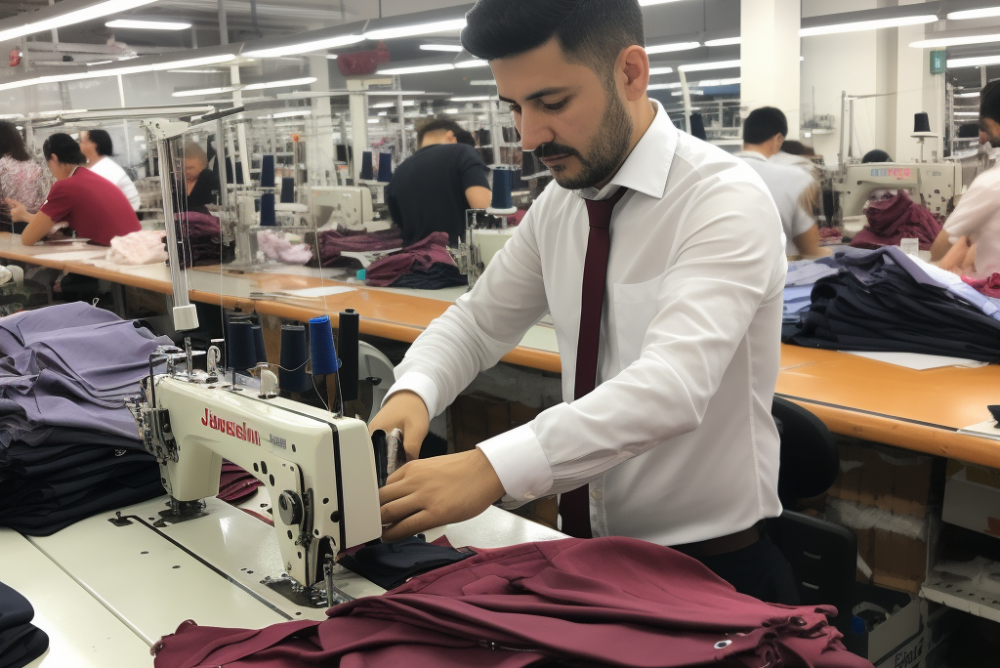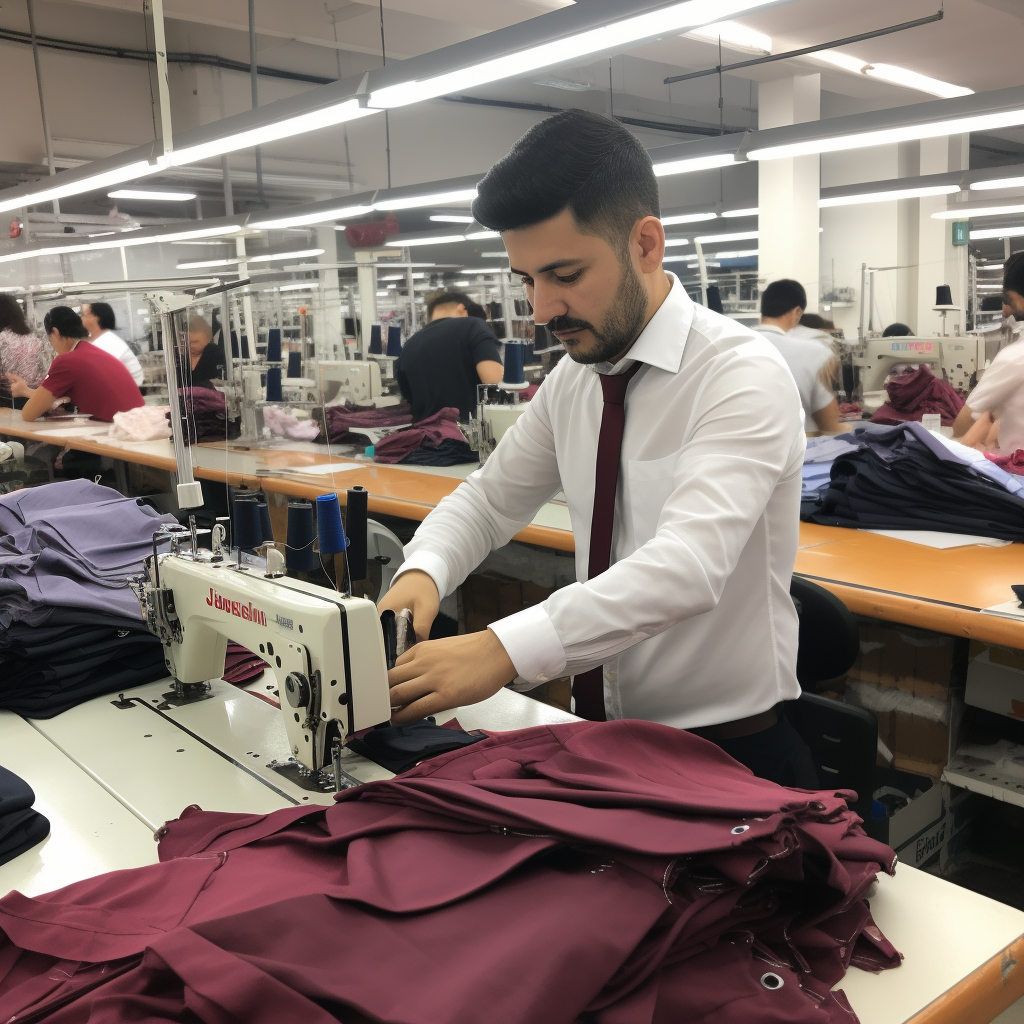Exploring OEM Clothing Manufacturing in Turkey: A Comprehensive Guide


In the world of fashion and apparel, the term "OEM" is often thrown around. Standing for "Original Equipment Manufacturer," this business model is all about customization and efficiency. Essentially, brands provide their unique designs to manufacturers, who then produce the clothing items to the brands' exact specifications.
While this model has been prevalent in various industries, including electronics and automotive, it has also gained traction in the world of clothing manufacturing. The reasons are manifold: it offers a high degree of control over the final product, cost-effectiveness, and speed to market, among others.
One country that has garnered a reputation as a leading player in the OEM clothing manufacturing arena is Turkey. Known for its rich history in textile production and its strategic location linking Europe and Asia, Turkey offers a compelling proposition for clothing brands looking for OEM partners.
However, as with any business decision, choosing to manufacture your clothing in Turkey comes with its own set of pros and cons. It is essential to understand these thoroughly before making a decision that could significantly impact your brand's reputation and bottom line.
In this article, we'll delve deep into the world of OEM clothing manufacturing in Turkey, exploring the benefits and challenges it offers. We'll also provide tips on how to navigate these challenges successfully, helping you make an informed decision.
Overview of OEM Clothing Manufacturing
Original Equipment Manufacturer (OEM) is a term used to depict a company that produces goods for another company to repackage and sell. These goods are custom-made according to the buyer's specifications. In the clothing industry, an OEM company manufactures clothes based on the design and specifications provided by the client, usually a fashion brand.
The OEM model's primary benefit lies in its ability to provide high-quality, customized products without the need for the brand itself to invest heavily in manufacturing infrastructure. It's an effective way for brands, especially startups and small-to-medium enterprises (SMEs), to launch and grow their product lines without a significant upfront investment.
Moreover, OEM manufacturing allows brands to focus on their core competencies such as design, marketing, and customer service, leaving the complexities of production to experienced manufacturers.
However, it's worth noting that while OEM manufacturing offers numerous benefits, it's not without its challenges. These can range from quality control issues and intellectual property concerns to potential communication gaps due to language and cultural differences.
Turkey: A Hub for Textile and Clothing Manufacturing
Turkey's positioning in the global textile and clothing manufacturing arena is no accident. It is the result of centuries of tradition, strategic geographic location, and concerted efforts by the government to promote the industry. As of 2021, Turkey was ranked as the third-largest textile supplier to the European Union, a testament to its prowess in this arena.
Turkey has a rich history in textile production, dating back to the Ottoman Empire. This heritage, combined with the country's strategic location that serves as a bridge between Europe and Asia, makes it an attractive destination for clothing brands worldwide.
Further bolstering Turkey's appeal is its robust domestic cotton production. Turkey is one of the top ten cotton producers globally, ensuring a steady, high-quality supply for clothing manufacturers. This availability of raw materials not only brings down production costs but also reduces lead times, making it an attractive proposition for brands seeking to adhere to fast-fashion timelines.
The Turkish government has also played a critical role in promoting the textile and apparel industry. It has introduced various incentives, including tax breaks and subsidies, to attract foreign investment and bolster local manufacturers. The country's workforce is another asset, skilled in the art of textile production and garment manufacturing.
However, as promising as Turkey's textile and apparel industry may seem, it's not without its challenges. Brands considering OEM manufacturing in Turkey must be aware of these potential pitfalls and weigh them against the advantages.
Pros of OEM Clothing Manufacturing in Turkey
When considering Turkey as an OEM clothing manufacturing destination, several advantages come to the fore:
1. High-quality production: Turkish manufacturers are known for their high-quality production. The craftsmanship and attention to detail often result in products that exceed the quality of garments produced in other popular manufacturing countries.
2. Quick turnaround times: Due to its strategic geographic location and efficient manufacturing processes, Turkey can offer relatively quick production turnaround times. This speed is a boon for fashion brands operating in the fast-fashion segment, where speed to market is critical.
3. Access to raw materials: As a major cotton producer, Turkey has a ready supply of high-quality raw materials. This availability can result in lower costs and shorter lead times, as there's no need to import materials from other countries.
4. Skilled workforce: Turkey's long history in textile production has resulted in a skilled and experienced workforce. These workers bring their expertise to the manufacturing process, contributing to the high-quality output.
5. Government support: The Turkish government offers a range of incentives designed to promote the textile and clothing industry. These incentives can make it economically advantageous to manufacture in Turkey.
Cons of OEM Clothing Manufacturing in Turkey
While Turkey offers several benefits as a destination for OEM clothing manufacturing, it's also important to consider the potential downsides:
1. Communication and cultural barriers: Although English is widely spoken in Turkey, language barriers can still arise, particularly when dealing with technical aspects of production. Additionally, cultural differences might lead to misunderstandings or miscommunications.
2. Geopolitical risks: Turkey's geopolitical situation can sometimes pose risks to businesses, including potential instability or changes in trade regulations. It's essential to stay informed about the current political climate and consider its potential impact on your business.
3. Intellectual property concerns: Like in many countries, protecting your designs and intellectual property can be a challenge. While Turkey has laws in place to protect intellectual property rights, enforcement can sometimes be inconsistent.
4. Shipping costs and times: While Turkey's location provides strategic advantages, it can also lead to increased shipping costs and times, particularly for companies based in North America or Asia.
5. Potential for inconsistent quality: While Turkish manufacturers are known for their high-quality production, there can still be inconsistencies. Quality control is a crucial aspect of OEM manufacturing, and it requires constant vigilance and strong relationships with manufacturers.
Navigating the Challenges: Tips for Success
Despite the challenges associated with OEM clothing manufacturing in Turkey, there are strategies that can help mitigate these issues and ensure a successful partnership:
1. Establish strong communication: Clear, open communication is critical to navigating language and cultural barriers. Be explicit about your expectations and requirements, and ensure they are fully understood.
2. Protect your designs: To safeguard your intellectual property, consider registering your designs in Turkey. Also, ensure your contracts with manufacturers include specific clauses about intellectual property rights.
3. Stay informed: Keep a close eye on Turkey's political climate and any changes in trade regulations that could impact your business. Consult with legal and trade experts to understand the potential implications.
4. Build strong relationships: Establishing strong relationships with your manufacturers can help ensure consistent quality. Regular visits, quality checks, and open dialogue can help build trust and mutual understanding.
5. Consider logistics: To mitigate potential shipping issues, consider working with a logistics partner familiar with the Turkish market. They can help navigate customs procedures and find the most cost-effective shipping methods.
Conclusion
OEM clothing manufacturing in Turkey offers a compelling proposition for brands, with benefits ranging from high-quality output and quick turnaround times to access to raw materials and skilled labor. However, like any business venture, it's not without its challenges.
Communication and cultural barriers, geopolitical risks, intellectual property concerns, and potential inconsistencies in quality are all factors that need careful consideration. However, with the right strategies and a thorough understanding of the landscape, these challenges can be mitigated.
In conclusion, the decision to opt for OEM clothing manufacturing in Turkey should be based on a comprehensive evaluation of both the pros and cons, keeping in mind the specific needs and capabilities of your brand. As we've seen, with careful planning, clear communication, and a focus on building strong relationships, it's possible to navigate the challenges and leverage the benefits of this vibrant manufacturing hub.
Remember, the key to a successful manufacturing partnership is not just about finding the right partner, but also about being the right partner. Open dialogue, mutual respect, and a commitment to quality and integrity can go a long way in ensuring a fruitful relationship.
This marks the end of our deep dive into OEM clothing manufacturing in Turkey. We hope this article has provided you with valuable insights and a solid understanding of the topic, enabling you to make an informed decision for your brand.





-500x500.jpg)
-500x500.jpg)
-500x500.jpg)
-500x500.jpg)
-500x500.jpg)